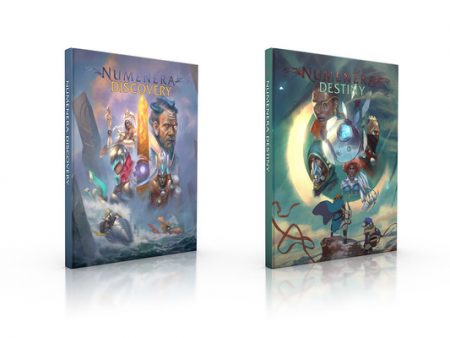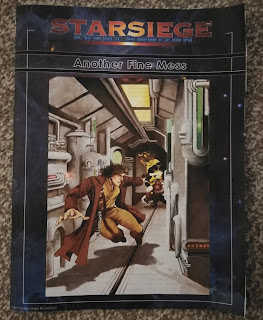Cepheus Light - a short review
My #RPGaMonth for November is again something old and something new, namely Classical Traveller and Cepheus Light, which is a rule reduced version of Mongoose’s OGL Traveller 1. I have read both [1] and am going to compare it to.
Traveller is a game which exist in many different variant, but Cepheus Light still uses the old 2d6 skill rolls. That is to succeed you need to get 8+ on two d6, but your skill level is subtracted from number, you have to roll. Pilot-2 will get the value to 6+. As always there a situational modifiers and so forth. Attribute modifiers like in Moongoose’s version have no effect on skill rolls.
The game uses six attributes: Strength, Dexterity, Endurance, Intelligence, Education and Social Standing, so there is not charisma attribute for a sparkling personality or general attractiveness. There aren’t any advantages or disadvantages or perks or something similar. A character is complete by her/his attributes, skill levels and equipment. If you write this down a character sheet it is just a few lines and can be done on a credit card size character sheet, like Zozer did for the Hostile setting [2]. Atrributes may range from 1 to 15, but are generated with a 2d6 Roll, so values are about 7 or 8, with a slight increase since you may add a bit later on.
Character generation is done in the usual Traveller fashion. The player chooses a career that her/his character should pursue. After that you get skills or bonus points to attributes from roll against certain career specific tables. Nowadays, this would be called a life path system.
The combat rules in Cepheus Light are fast and relatively harsh. Damage is applied to the three physical attributes. So, normally a character can absorb about 21-25 points of damage, before dying. But whenever the first attribute reaches zero Cepheus Light lets a character fall unconscious for 1d6 rounds. Without help that might mean getting captured or worse. After the unconsciousness the character wakes up with half the damage to the attribute restored. Two attributes down to zero give a serious wound. Compared to the original Traveller rules these are more forgiving, compared to Mongoose’s version Cepheus Light is harsher.
Cepheus Light has each character have two actions per round and combat seems much more versatile than in the original. That versatility is completely explained in two longer combat examples in the book, which take an awesome amount of 8 of the 160 pages. There the Cepheus Light book really shines and I would really find it useful if other people could follow this example. Writing down rules clearly is one thing, but a fully worked out combat example may also at least implicitly give something away about how the game is supposed to be played and which strategies might be incorporated. Combat feels fast paced and simple, but in no way overly heroic.
Since we did not play any of the space ship rules stuff in the play tests I skip that parts. The rules are in the book and they seem good. Like for combat Cepheus Light offers a more streamlined version of the original approach, without being lost in details. Thumbs up for that :)
How did the playtest feel?
I ran two sessions of Cepheus Light where we played a reversed version of the classical Divine Intervention module [3] as a one shot. All players had played Traveller in the shape or form before so we could get right into the action, which is a kind of spy covert-op stuff. In both cases as a GM it felt easy to manage the stuff and left enough space for creative details along the path. The players made plans and could follow them through while having enough surprise and danger for them.
In conclusion
A great book. It offers a modernized version of Classic Traveller without being too Mongoose-y. As it is pay what you want and there is going to be an editable .doc version which could be the basis for a homebrew version of it, Cepheus Light is arguably the best deal you could hope for. A huge thanks to Omer Golan-Joel and Josh Peters for writing the book and making it available in this way. Get it now!
[1] It is actually a reread for Traveller 1, that I have played decades ago.
[2] Look at the id card in the middle of the page. That is actually a character sheet. http://spacecockroach.blogspot.com/2017/12/a-review-of-hostile-by-zozer-games.html
[3] http://wiki.travellerrpg.com/Divine_Intervention/Night_of_Conquest





 compared
compared

